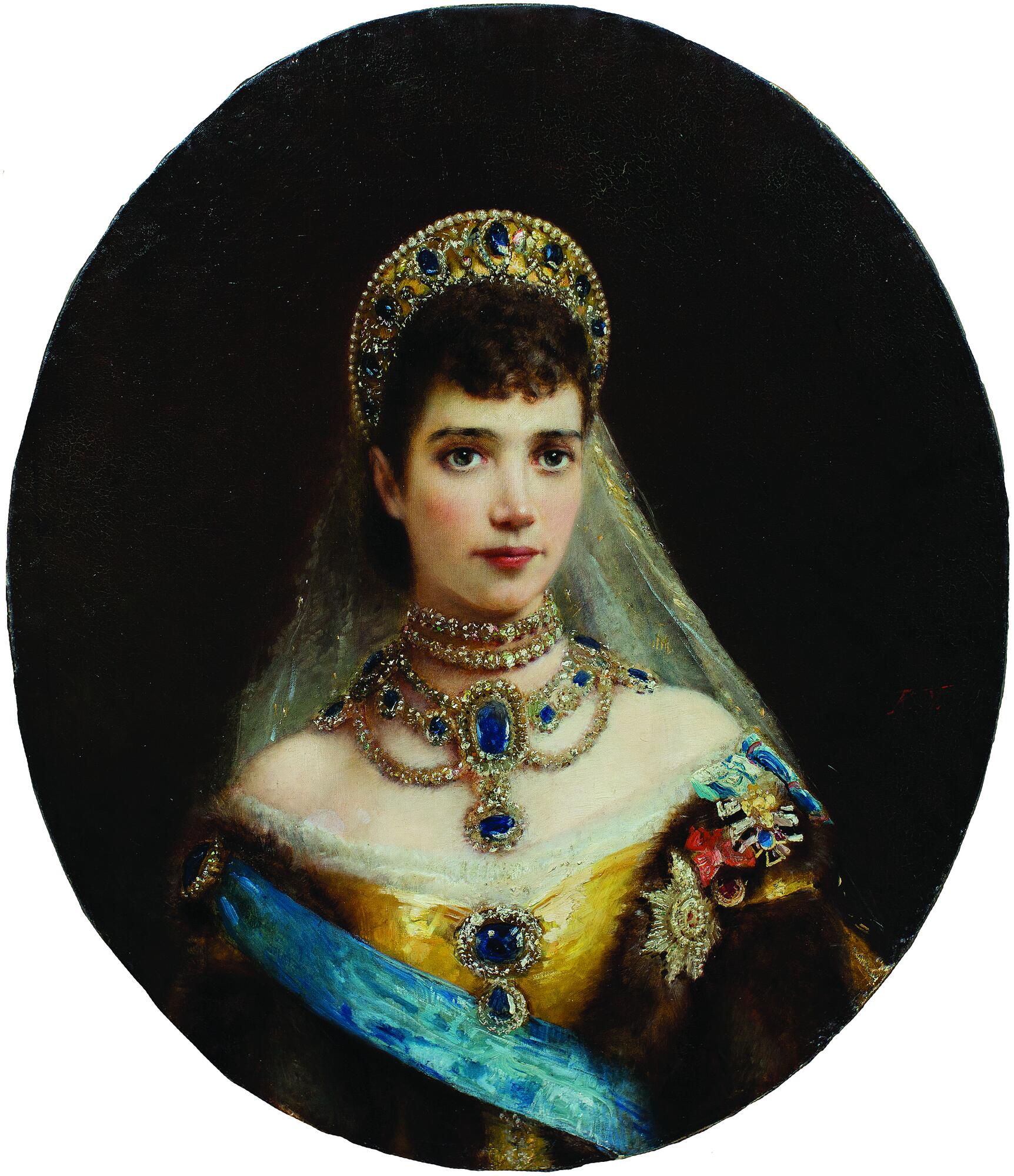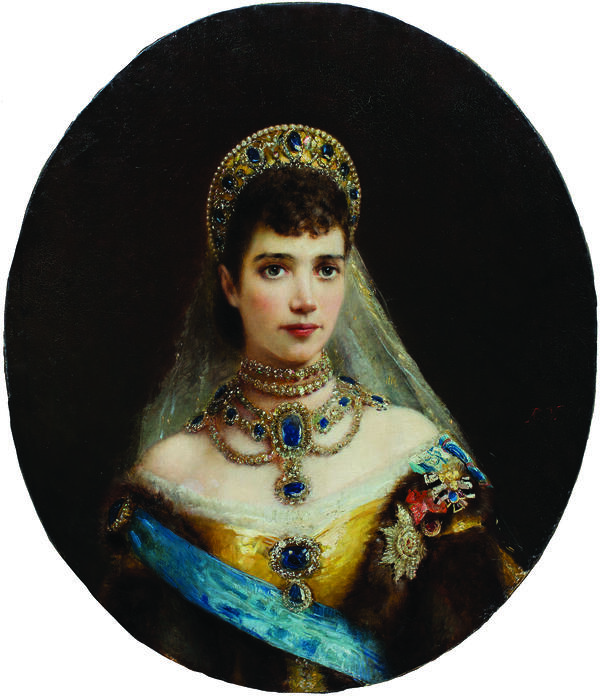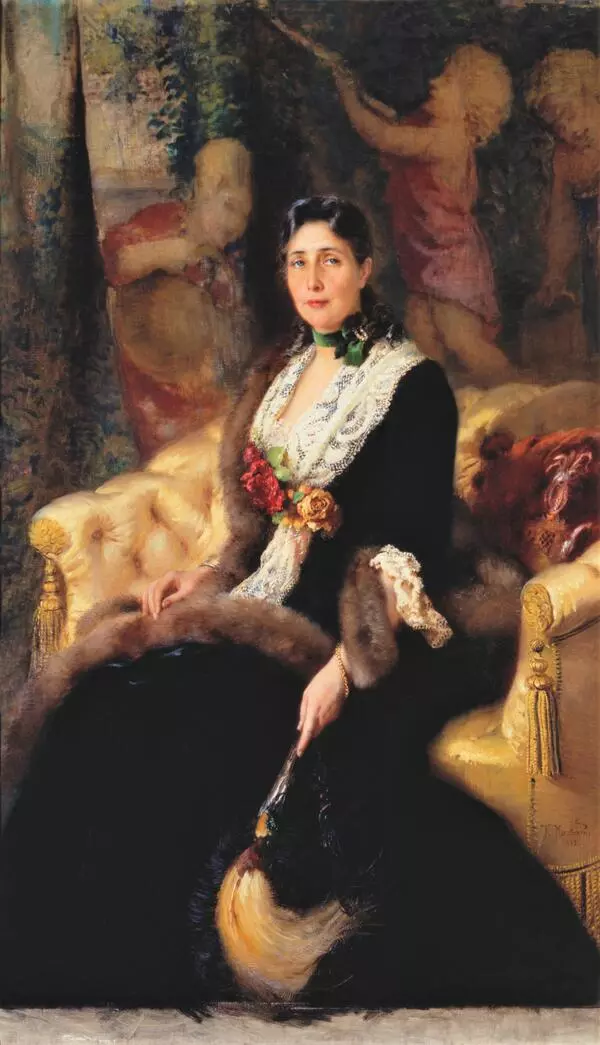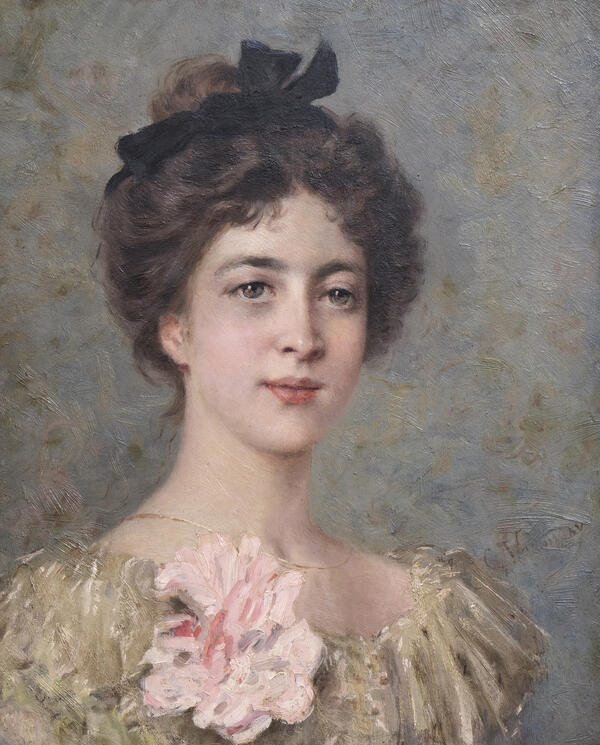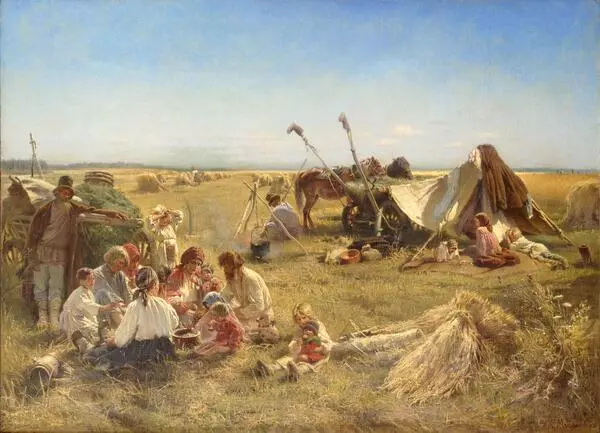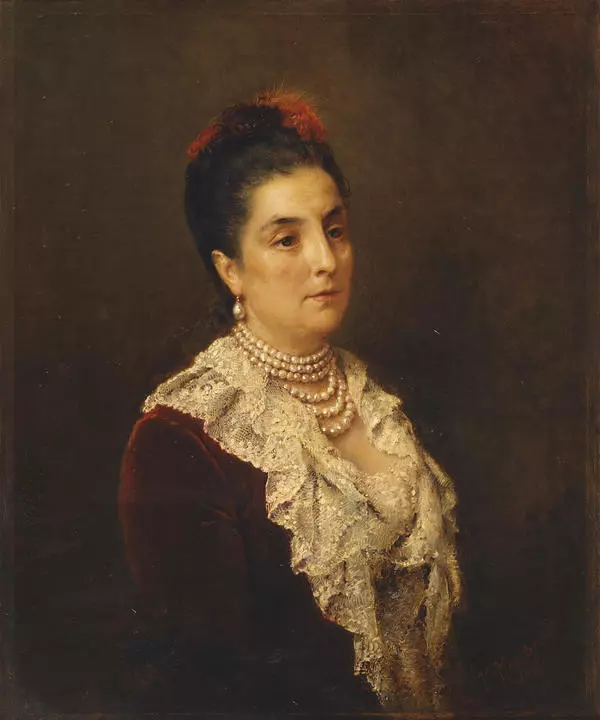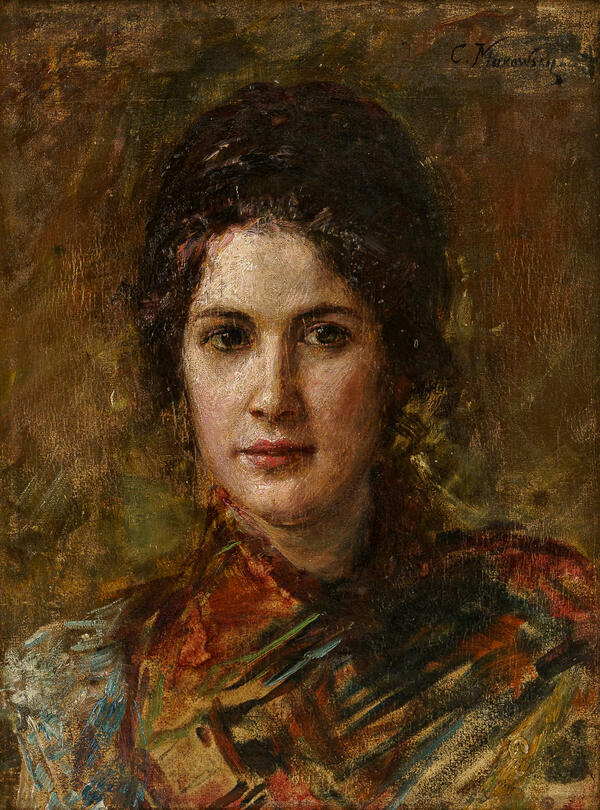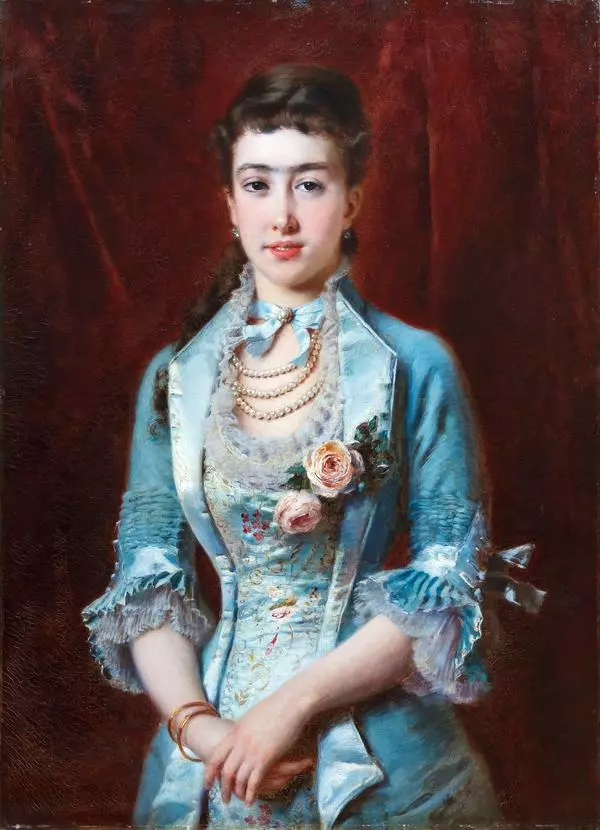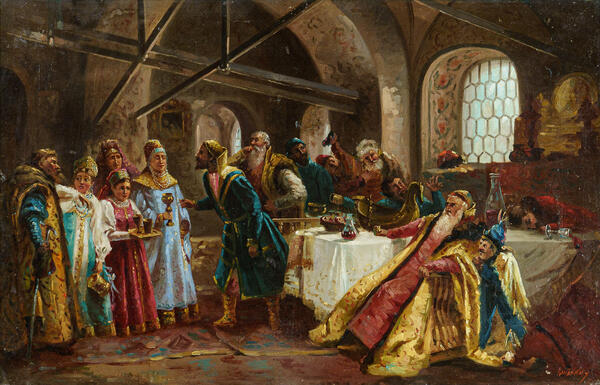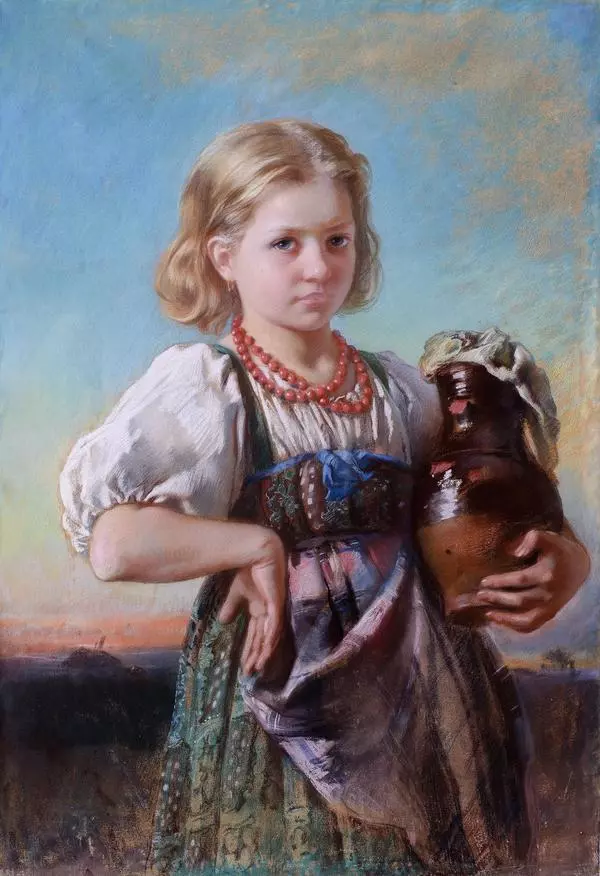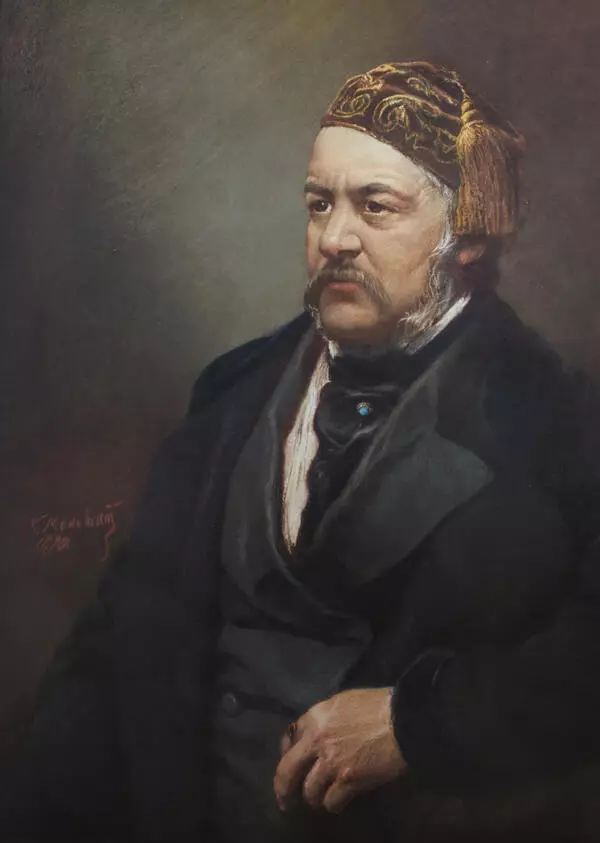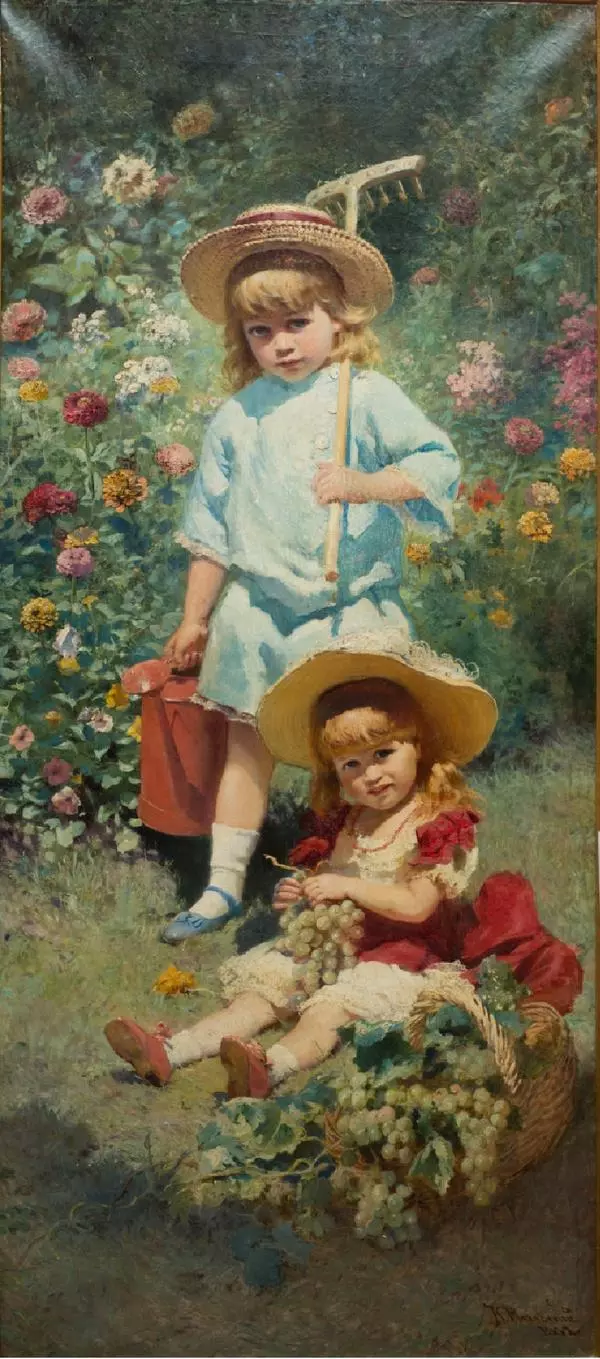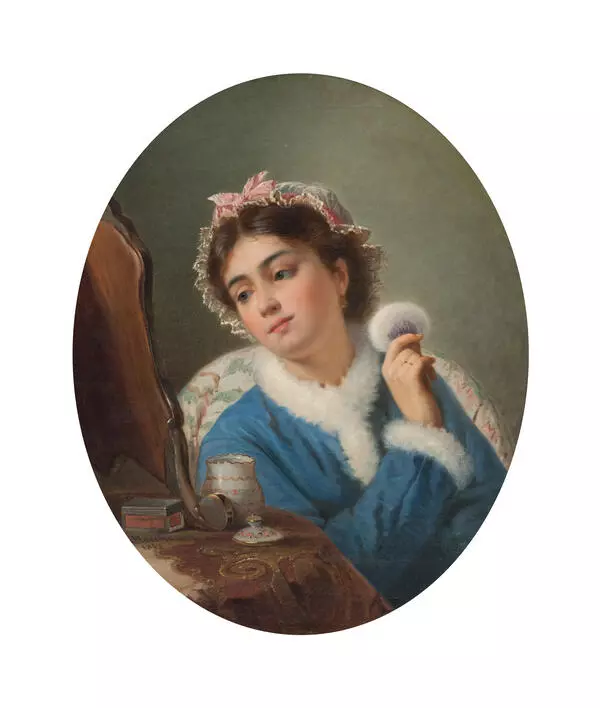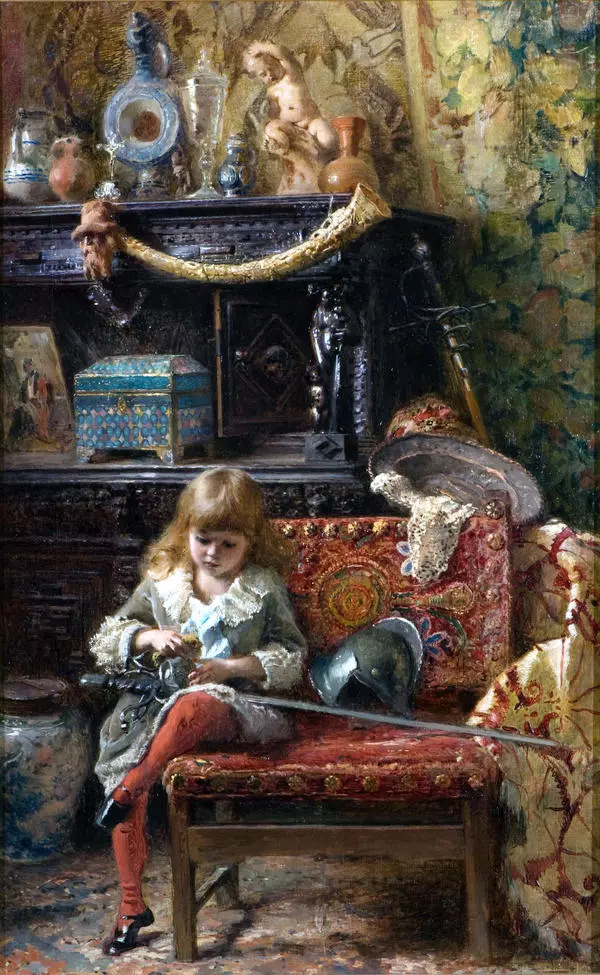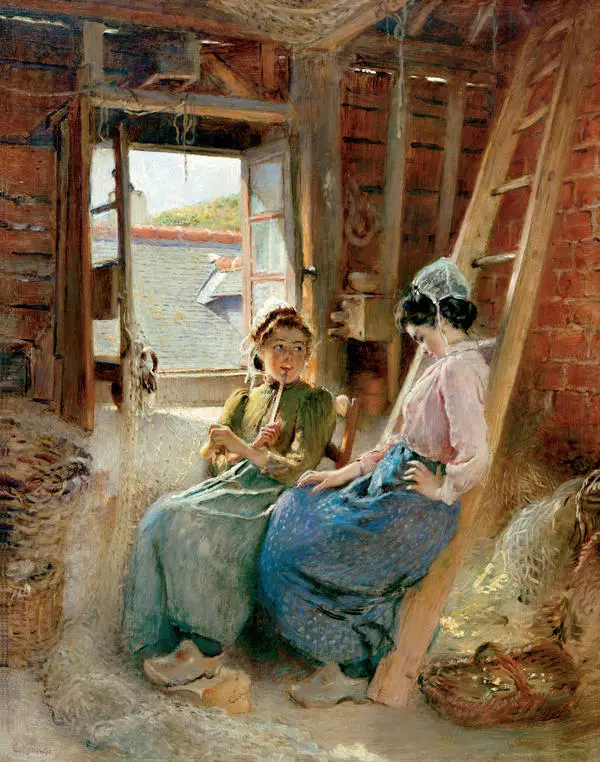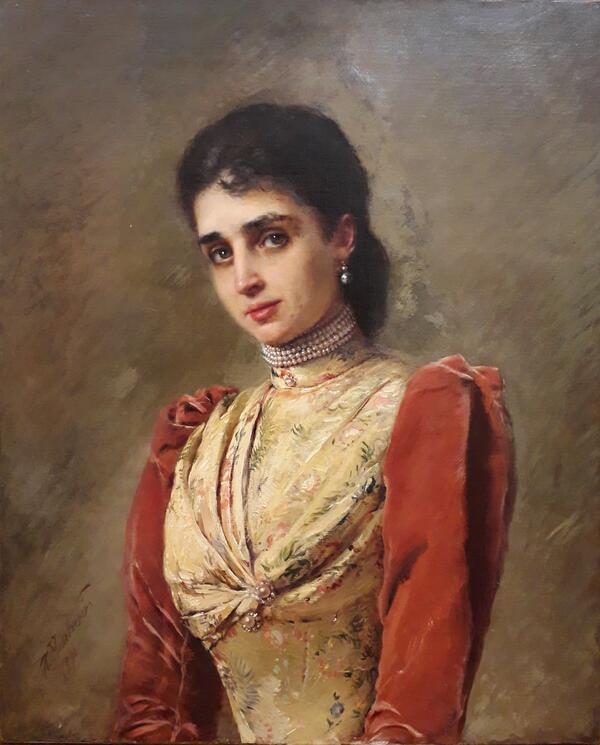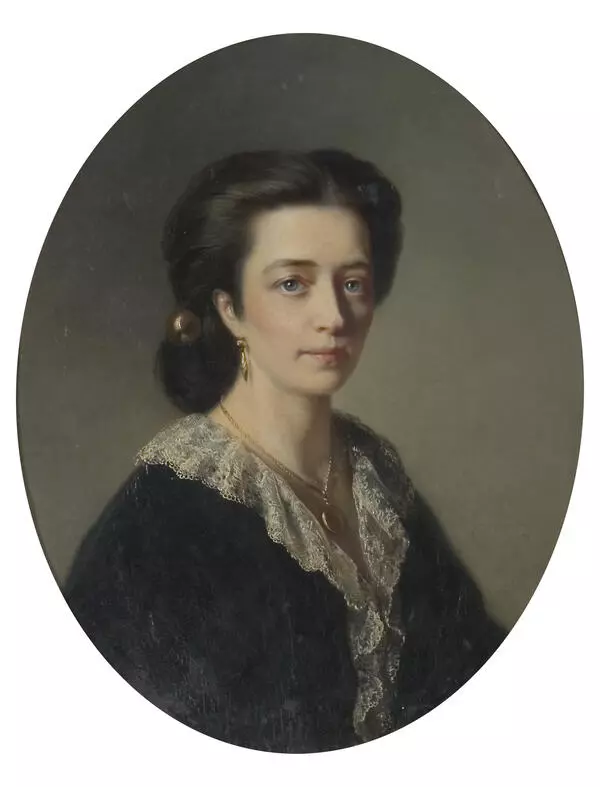The portrait of Maria Feodorovna was painted by Konstantin Makovsky, one of the most popular Russian artists of the late 19th century. The Makovsky dynasty gave Russian culture several generations of artists. Its founder was Yegor Makovsky — a professional accountant, collector, a passionate art connoisseur, one of the founders of the Moscow School of Painting, Sculpture and Architecture. His children Konstantin, Alexandra, Vladimir, and Nikolay became famous artists.
The portrait depicts Maria Feodorovna, born as Maria Sophia Frederica Dagmar — a Russian empress from the Romanov dynasty, daughter of the Danish king Christian IX. At first, she was the bride of Nicholas, the heir to the Russian throne, the son of Emperor Alexander II. After the tragic death of Nikolas Alexandrovich, she was engaged to the new heir to the throne, Alexander Alexandrovich, the future Alexander III.
The marriage turned out to be extremely successful. Ivan Turgenev noted that Maria Feodorovna and Alexander III ‘had an exemplary and amazing marriage in agreement and constancy of affection.’ Together with her husband, the empress patronized artists and collected paintings. The collection assembled by the imperial couple formed the basis of the collection of the Russian Museum in St. Petersburg.
Maria Feodorovna continued to manage the Empress Maria’s department, which oversaw women’s educational institutions. In Irkutsk, where female education was especially valued, the empress was very popular.
After the abdication of her sons Nicholas II and Mikhail, Maria Feodorovna left for the Crimea. In 1919, she left for Great Britain on a ship that had been sent by her sister, Queen Alexandra of England. Later Maria Feodorovna returned to Denmark.
In the painting by Makovsky, Maria Feodorovna is depicted half-length in the three-quarters view. The Empress wears a yellow dress with light-colored lace and a deep neckline. A white and gold veil is attached to the luxurious ‘kokoshnik’ tiara. On the left shoulder are the awards, the depiction of one of them — the star of the Order of the Holy Apostle Andrew the First-Called, who is considered the patron saint of Russia, — is especially detailed. The blue ribbon of the order is on the empress’s right shoulder.
Makovsky did not follow the canons of the ceremonial imperial portrait and portrayed Maria Feodorovna not as the Empress, but rather as a beautiful lady. The delicate features of her face, her exquisite attire, the oval shape of the portrait — all this serves to create a special elegant image of the model.
The portrait depicts Maria Feodorovna, born as Maria Sophia Frederica Dagmar — a Russian empress from the Romanov dynasty, daughter of the Danish king Christian IX. At first, she was the bride of Nicholas, the heir to the Russian throne, the son of Emperor Alexander II. After the tragic death of Nikolas Alexandrovich, she was engaged to the new heir to the throne, Alexander Alexandrovich, the future Alexander III.
The marriage turned out to be extremely successful. Ivan Turgenev noted that Maria Feodorovna and Alexander III ‘had an exemplary and amazing marriage in agreement and constancy of affection.’ Together with her husband, the empress patronized artists and collected paintings. The collection assembled by the imperial couple formed the basis of the collection of the Russian Museum in St. Petersburg.
Maria Feodorovna continued to manage the Empress Maria’s department, which oversaw women’s educational institutions. In Irkutsk, where female education was especially valued, the empress was very popular.
After the abdication of her sons Nicholas II and Mikhail, Maria Feodorovna left for the Crimea. In 1919, she left for Great Britain on a ship that had been sent by her sister, Queen Alexandra of England. Later Maria Feodorovna returned to Denmark.
In the painting by Makovsky, Maria Feodorovna is depicted half-length in the three-quarters view. The Empress wears a yellow dress with light-colored lace and a deep neckline. A white and gold veil is attached to the luxurious ‘kokoshnik’ tiara. On the left shoulder are the awards, the depiction of one of them — the star of the Order of the Holy Apostle Andrew the First-Called, who is considered the patron saint of Russia, — is especially detailed. The blue ribbon of the order is on the empress’s right shoulder.
Makovsky did not follow the canons of the ceremonial imperial portrait and portrayed Maria Feodorovna not as the Empress, but rather as a beautiful lady. The delicate features of her face, her exquisite attire, the oval shape of the portrait — all this serves to create a special elegant image of the model.
